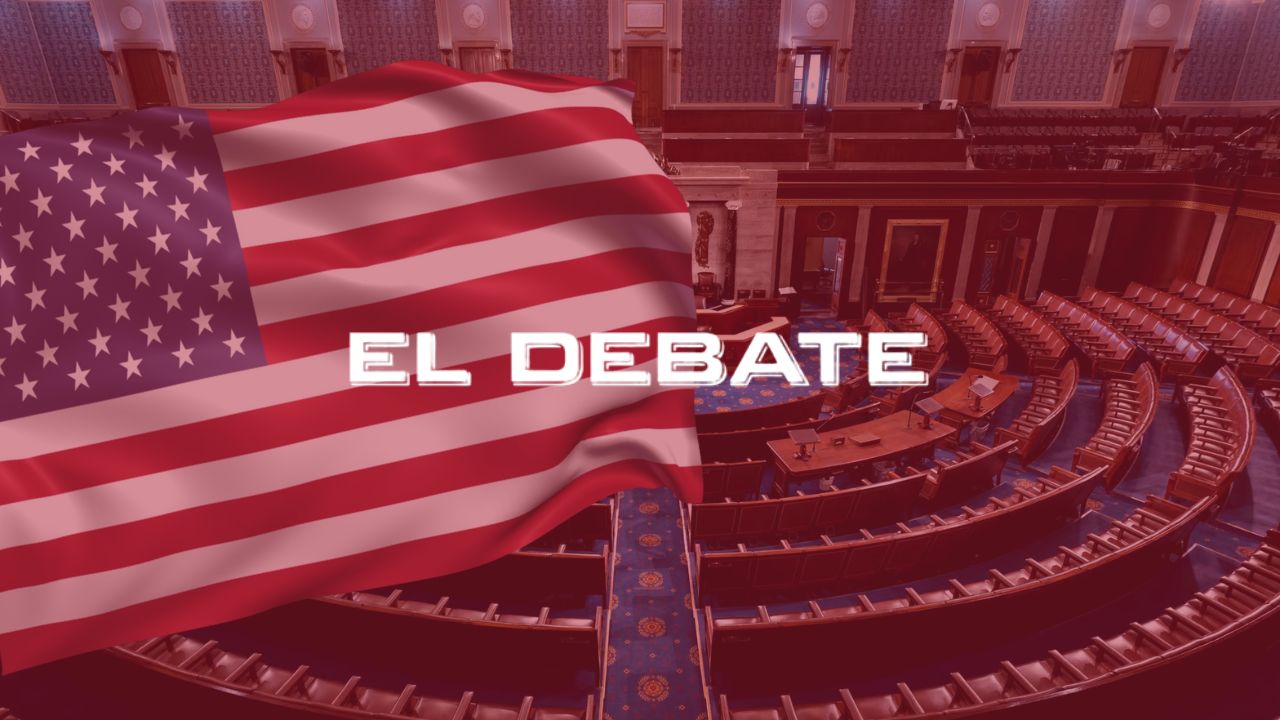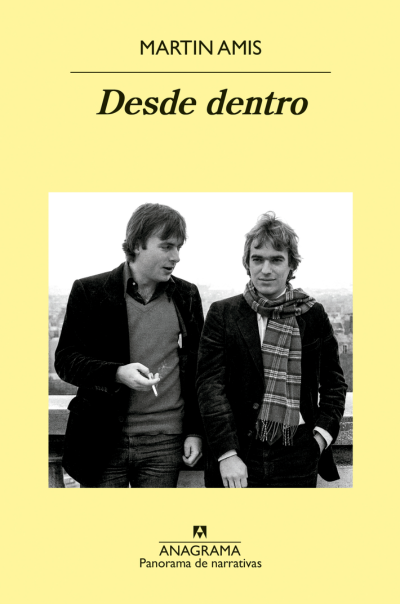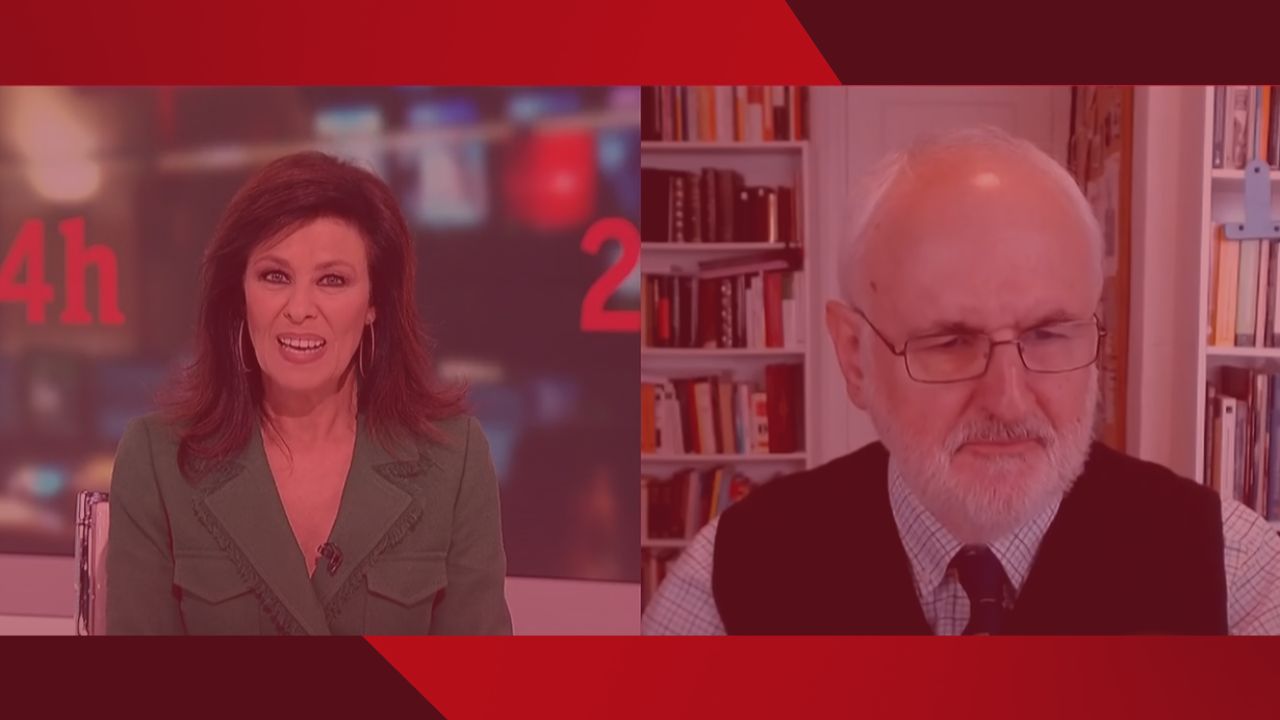In recent decades, authoritarianism on the political left has sparked an exodus of freethinkers who have found asylum on a weakened political right. Thus, the political-ideological right has adopted a position that goes back largely to classical liberalism; forming a newly created conservative-liberalism. This conservatism, far from limiting or harming liberalism, seems to have become its greatest protector, as guarantor of both liberal democracies and the international liberal order. However, this new configuration of the political right is not a structural phenomenon, but a conjunctural one. It is a right of exception, but one which, due to its exceptional nature, is worth preserving.
Two decades ago, the turn of the century and the millennium brought with it another of ideological-political sign. A change that has blurred some of the most representative elements of both the «classic» left and right, although these are little more than two centuries old as these are concepts that were born in the midst of the French Revolution, within the framework of the National Constituent Assembly of 1789. At the same time, this change has caused a process of certain transmutation between these two antagonistic blocs, which has led to some of the features of the political left to pass to the right, and vice versa.
In the past, «the left» has been characterised by having among its acolytes the most famous freethinkers; those who, throughout these two centuries, have raised their voices and have put their scholarship at the service of ideals that, either directly or indirectly, questioned a status quo that the literature has often referred to as “the right ”, or conservatism; given that, by definition, this state of affairs is never a mere snapshot, but rather requires a survival in time, which only has a place through its maintenance. And this, in turn, explains the proactive attitude by power structures to ensure their own survival. The term «right» has been used historically to refer to those who dominated such power structures. However, both this meaning and its opposite —which is defining of the left to which it is opposed— are wrong. At least partially.
First, this left-freedom and right-authority dichotomy confuses radical issues with environmental ones. It is true that the right, which for the purposes of this article, we can also refer to as conservatism, has had a strong grip on power structures for almost its entire existence as an ideological-political bloc. However, these structures, which may have been economic pre-eminence, ecclesiastical structure, monarchy and nobility, etc., are not at the root, at the core, of conservatism. On the contrary, it is a series of environmental conditions that, while there is no doubt that greatly facilitate the emergence and prosperity of their ideas, are not necessary or sufficient requirements for their existence. Therefore, although these environmental or contextual elements have been considered as innate to conservatism, it is essential that they be dissociated from their nature.
The other side of the coin is found in the conceptualisation of the left as a liberal ideology that resists the dominant, and that sustains the discordant note in society, staging a certainly disruptive discourse —very often accompanied by activism. Here, again, and in a complementary way to the analysis of conservatism, the environmental elements —for example, social minority or lower purchasing power— are confused with the ideology in a strict sense. However, as we will see below, political, ideological, cultural hegemony, etc., derives from the combination of these two elements: nature and context. And as we will also observe, sometimes the root of a political position is also the main engine of change in the context that surrounds it, in order to achieve political, economic, social and cultural pre-eminence.
Secondly, this generalised confusion also draws from a previous and more serious association, which is the contemplation of political philosophy as a mere horizontal axis. On the contrary, to that axis we must add the vertical one. Thus, if the left and the right hold the two extremes of the horizontal political spectrum, authoritarianism and freedom are those of the vertical dimension [1].
A holistic observation of the radical and environmental factors of the left and the right shows that, over the last two centuries, the left has been closer to freedom —free-thinking and anti-establishment— while the right has lived in an ecosystem closer to authority. However, as I pointed out at the beginning, this has changed substantially in a matter of two decades, since the right has swung towards freedom, while the left has rapidly moved towards authority [2]. And the cause for this phenomenon is twofold. On the one hand, it is due to the change in the environmental factors of the left, which have allowed it to reach higher levels of power, and on the other, it is explained by a greater tendency or authoritarian aspiration of the political left, to which it is irrevocably led by its Marxist spirit. In other words, the accommodation of environmental factors has only been a consequence of the left’s struggle to spoil these at will and has created an environment beneficial to its growth and development, together with the abandonment of the political right, which has fallen asleep in complacency and under a false sense of preponderance, which it mistakenly took for granted.
But what is truly relevant in this paradigm shift is that the authoritarian drift of the left has caused a massive exodus on a global scale of true freethinkers, who have ceased to feel identified with this new hegemonic, intransigent, intolerant idiosyncrasy… The left has devoured their children, as Saturn did in the famous Goya painting, and personalities of various backgrounds (intellectual, media, etc.), such as Eric and Bret Weinstein, Sam Harris, Steven Pinker or David Rubin have said enough is enough.
Now, the dissent and desertion of a political or ideological postulate or position is not at all novel; in particular, the abandonment of the left after the confirmation of its current philosophical configuration, based on Marxist thought and, therefore, antagonistic to freedom. This has been the case since the mid-twentieth century, as reflected in the 1950 publication of the book The God Who Failed; a collection of essays that gather the testimonies of six famous former communists who apostatised from that secular faith. Similarly, there are some figures that have awakened from the dream of the left that sand out, such as David Horowitz or, in the case of Spain, Federico Jiménez Losantos. What is new is that, having been orphaned, many former militants of the left —thinkers and ordinary people alike— have found refuge in a weakened political right in every way —in the rigour of its theoretical-philosophical arguments, in the power that it retains, in the will and capacity to face the left in the cultural battle, etc. And the political right, in a vast majority of cases, has welcomed them with its arms wide open.
The right has oscillated towards freedom, at the same time that the left did towards authority due to the change in environmental factors and a greater authoritarian tendency
Thus, the right, once hermetic, has been permeated by free thinkers and stateless intellectuals from diverse backgrounds, which have transformed it into a heterogeneous, open, tolerant group of honest discussion. This does not mean that there were no exponents of freedom of thought in the right beforehand —again, it is essential to dissociate the horizontal and vertical dimensions of the philosophical-political spectrum— but that the right of the last century has undergone a metamorphosis [3] by virtue of which, as Niall Ferguson [4] pointed out a little over a year ago, conservatism has turned into some sort of classic Anglo-Saxon liberalism which finds its main reference in the writings of Edmund Burke.
Now, what does this new conservative-liberalism really consist of? It should be noted here that this concept is not new in contemporary political philosophy, especially in Spain, where modal liberalism, in statistical terms, has always had the surname of «conservative».
A first conceptualisation of this set of postulates in our country can be found in the time immediately after the Napoleonic invasion, when a strong traditionalist moralism integrated some liberal elements of French roots. But this is not the idea to which I refer. Neither is its subsequent division, also during the nineteenth century, by which a theological-political line of thought closer to authoritarianism split from liberal-conservatism inspired by Gallic doctrinarianism. Lastly, it does not follow the current conservative-liberalism advocated by Francisco J. Contreras [5], who ultimately advocates for some kind of perfectionist liberalism like the one famously defended by authors like Joseph Raz.
Far from that liberalism that harbours a somewhat paternalistic conservatism, the phenomenon that I think we are witnessing is much more humble, since it only seeks the survival of these two worldviews, fused in a melting pot of pragmatism that brings to mind some characteristics of the Reagan or Thatcher legacies.
The need for this new symbiosis between liberalism and conservatism is attested by its enormous practical utility, both in the protection of the liberal state and in the preservation of the liberal order. The need for this new symbiosis between liberalism and conservatism is attested by its enormous practical utility, both in the protection of the liberal state and in the preservation of the international liberal order, since conservatism stands as the best safeguard of both. And I say need because nobody can refute that it is in the current liberal democracies, as well as in the international system that they form, where the highest levels of freedom, justice and prosperity have been achieved throughout History. Hence, its protection is vital. Let us briefly observe how this strange alliance works in the face of the challenges liberalism faces today.
The main internal threats that liberalism encounters today are embodied in populism, nationalism and, of course, authoritarianism. These, problems typical of liberal democracies, are also global, as their presence has clearly reached a global dimension, which contributes to undermining the integrity of the international liberal order, whose attempt to destroy is added to the dizzying growth of China and the ever-combative Russia.
Thus, the dreams of supremacy of other superpowers put the international liberal order in serious trouble, by drawing a multipolar landscape in which several actors try to impose their vision. Likewise, the existence of cultures very different from the that of the West brings collisions, as Huntington brilliantly explained in Clash of Civilizations (1996). However, the warmongering of China and Russia or the —paraphrasing the title— clashes of civilizations are not explained by the absence of an evident expansionism of this liberal international order that, although it cannot be strictly branded as cultural imperialism, far from strengthening it, weakens it. Therefore, its survival, as we know it today, seems to go hand in hand with conservatism [6]. The international liberal order will be conservative, or it will not be. This was also recently pointed out by Josef Joffe in an article for this journal entitled Crisis of the international liberal order: “Liberal states are needed to create a liberal order. In Europe, the paradox is that the liberal open-border order threatens the liberal state (…). This is the paradox: Europe must apply non-liberal means (…) to preserve liberal democracy at home”[7].
Regarding the internal challenges mentioned above, many of them are based on the permissiveness of open and tolerant societies such as those that prosper in liberal democracies. Liberal political theory has extensively studied these self-inflicted wounds and, in particular, the so-called paradox of tolerance, which is already a classic problem, coined by Popper in the first volume of The Open Society and Its Enemies (1945), in which he concluded that liberal societies could not be tolerant in an unlimited way, since their capacity to do so would ultimately be limited or eliminated by the intolerant.
However, in current liberal democracies, the prevailing thesis is not that of Popper, but that of Rawls, who, in his A Theory of Justice (1971), advocates for a society characterised by tolerance even of the intolerant [8]. And it is precisely the embrace of this type of postulates what has seriously questioned the survival, in the medium and long term, of the political systems and freedoms that we enjoy today in the West. Again, a more conservative stance would serve as a protection mechanism for the liberal state, as it would ensure the maintenance of a society made up of free and equal citizens, and tolerant of the ideals of the good life of others, provided they were reasonably liberal.
In short, a couple of decades ago, conservatism was seen, both by defenders of a more “historic” conservative-liberalism and by its detractors, as a brake or limit to liberalism, which was relegated to the sphere of politics or the economy, while conservatism shielded moral issues. However, in this newly created conservative-liberalism, the former does not represent a limit to the latter, but its greatest ally. It is worth preserving the identity of liberal democracies and guaranteeing their instrumental value. And in the spirit of preserving certain structures and characteristics, conservatism deploys the best tools, because therein lies its raison d’être.
However, this alliance does not remain oblivious to considerable challenges either; the first of them, of a temporary nature. This particular symbiosis is about something conjunctural, not structural; and not only punctual, but improbable, since the response to authoritarianism by an ideological rival usually takes shape in the search for power, in order to replicate the effects of the period of prominence of its rival, but in the opposite direction. We rarely witness a response more aligned with freedom to the display of authority that the left has made in recent times. After all, what defines politics is power as nature and confrontation as dynamics, as Carl Schmitt pointed out.
However, at this particular moment in time, a rara avis has been born that is worth protecting, both from the left installed in power and victorious in the cultural battle, and from a right in the process of expansion or reconquest, as reflected in Trump, Brexit, or the rise of national-populism across Europe. It should be remembered that the right, perhaps with a less innate tendency to authoritarianism, handles with special —and worrisome— ease the structures of power, as a consequence of its historical predominance there. Thus, regardless of the direction from which authoritarianism comes, it will always end —expressly or tacitly— with the freethinkers who today stay with the right, mostly liberal and conservative, and which stands as the greatest safeguard of individual freedom, equality before the law and the rule of law.
Finally, a humble request. It is the task of both liberals and conservatives to preserve this exceptional right of exception, with as much zeal as with the one that they have to advocate for a more comprehensive, tolerant and de-dogmatised left. At this point, at least, presenting a common front is essential, since talking —and discussing— about the purism of each other’s ideological postulates does a disservice to a fight in which the current authoritarian left will be united in the destruction of freedom and prosperity.
[1] This vertical philosophical-political axis resembles, in the field of psychology the F-Scale; a personality test created in 1947 by Theodor Adorno and others, whose purpose is to measure the predisposition to fascism (F), understood as personality.
[2] I am referring here to activism and the search (and achievement) of explicit power by the left, as well as the conquest of institutions. In the theoretical and ideological field, the authoritarianism of the left has been a process that began more than sixty years ago.
[3] One of the most representative examples of this phenomenon is perhaps the creation, spontaneously, of the so-called Intellectual Dark Web, a group of public personalities, ideologically and intellectually diverse, but who oppose political correctness and the identity politics of the left, in which they find their main adversary.
[4] This was expressed in a brief conversation at the end of the presentation of his book The Square and the Tower (2018) at the Rafael del Pino Foundation.
[5] It is necessary to highlight the enormous importance of this perfectionist-conservative liberalism, explained in detail in In Defence of Conservative Liberalism (2018), since it currently forms the ideological foundations of Vox.
[6] Lind, J. and Wohlforth, W.C. (2019). The Future of the Liberal Order is Conservative. Foreign Affairs. March / April 2019. [online]. Available at: https://www.foreignaffairs.com/articles/2019 -02-12 / future-liberal-order-conservative
[7] Joffe, J. (2018). Crisis of the International Liberal Order. FAES: Notebooks of political thought, 60. October / December 2018, p. 12.
[8] At this point, it is worth recalling something often forgotten by Rawls’s followers: the fact that Rawls concludes that liberal society also has a reasonable right to survival; a right that prevails over the principle of tolerance. Thus, Rawls’s thesis largely subscribes to Popper’s solution to the dilemma of tolerance, although his followers rarely concede this point.
BIBLIOGRAPHY
Contreras, F.J. (2018). A Defence of Conservative Liberalism (Madrid: Unión Editorial and Centro Diego de Covarrubias).
Guide, A., Silone, I. Koestler, A. Fischer, L. Spender, S. & Wright, R. (1996). The God who Failed (Buenos Aires: Editorial Plaza & Janés)
Joffe, J. (2018). The crisis of the international liberal order. FAES: Notebooks of political thought, 60. October / December 2018.
McClosky, H., & Chong, D. (1985). Similarities and differences between left-wing and right-wing radicals. British Journal of Political Science, 15 (3), pp. 329-363.
Popper, K. (2010). The Open Society and Its Enemies. (Barcelona: Paidos)
Rawls, J. (1997). A Theory of justice. (Madrid: Economic Culture Fund)






